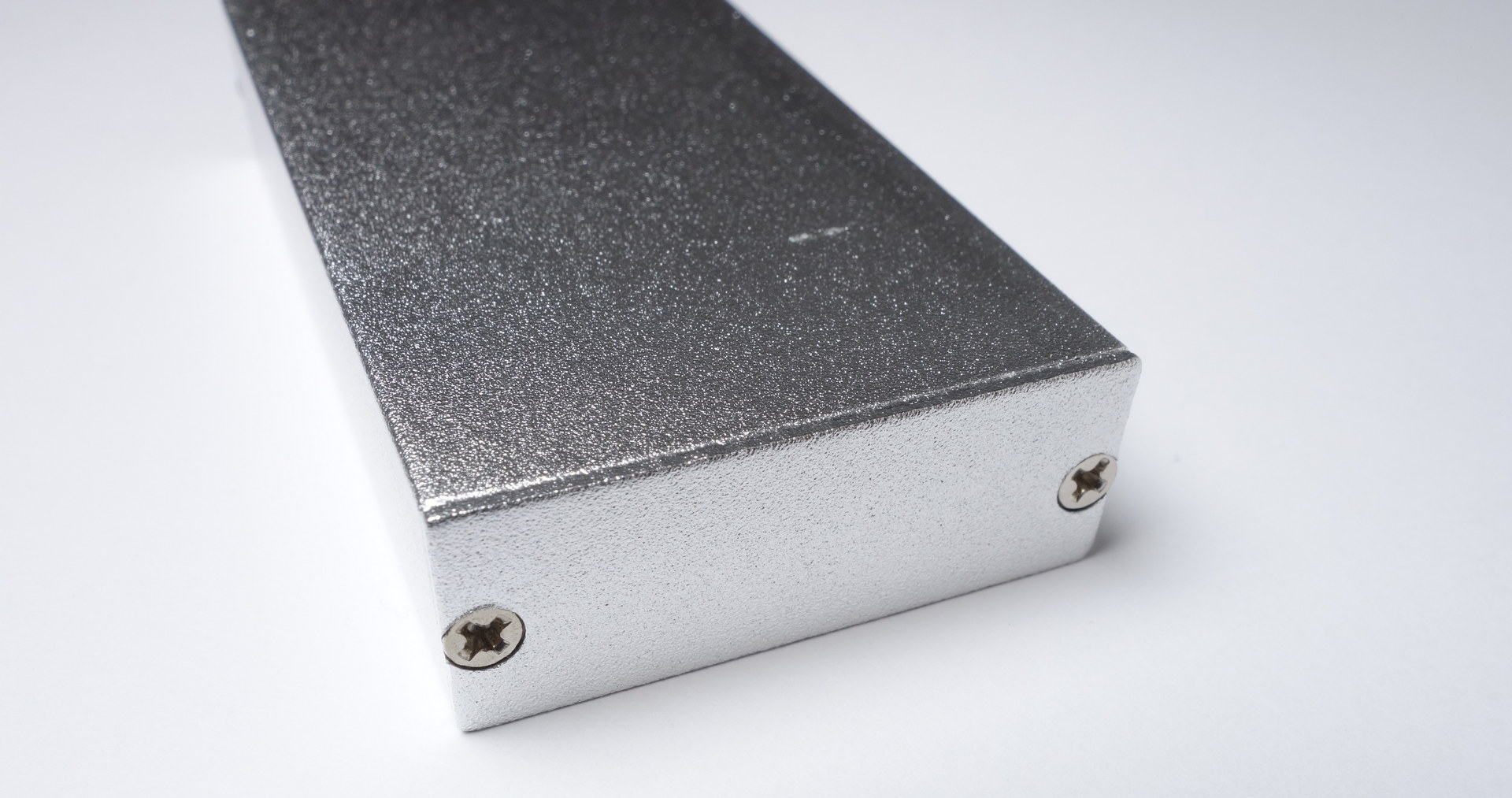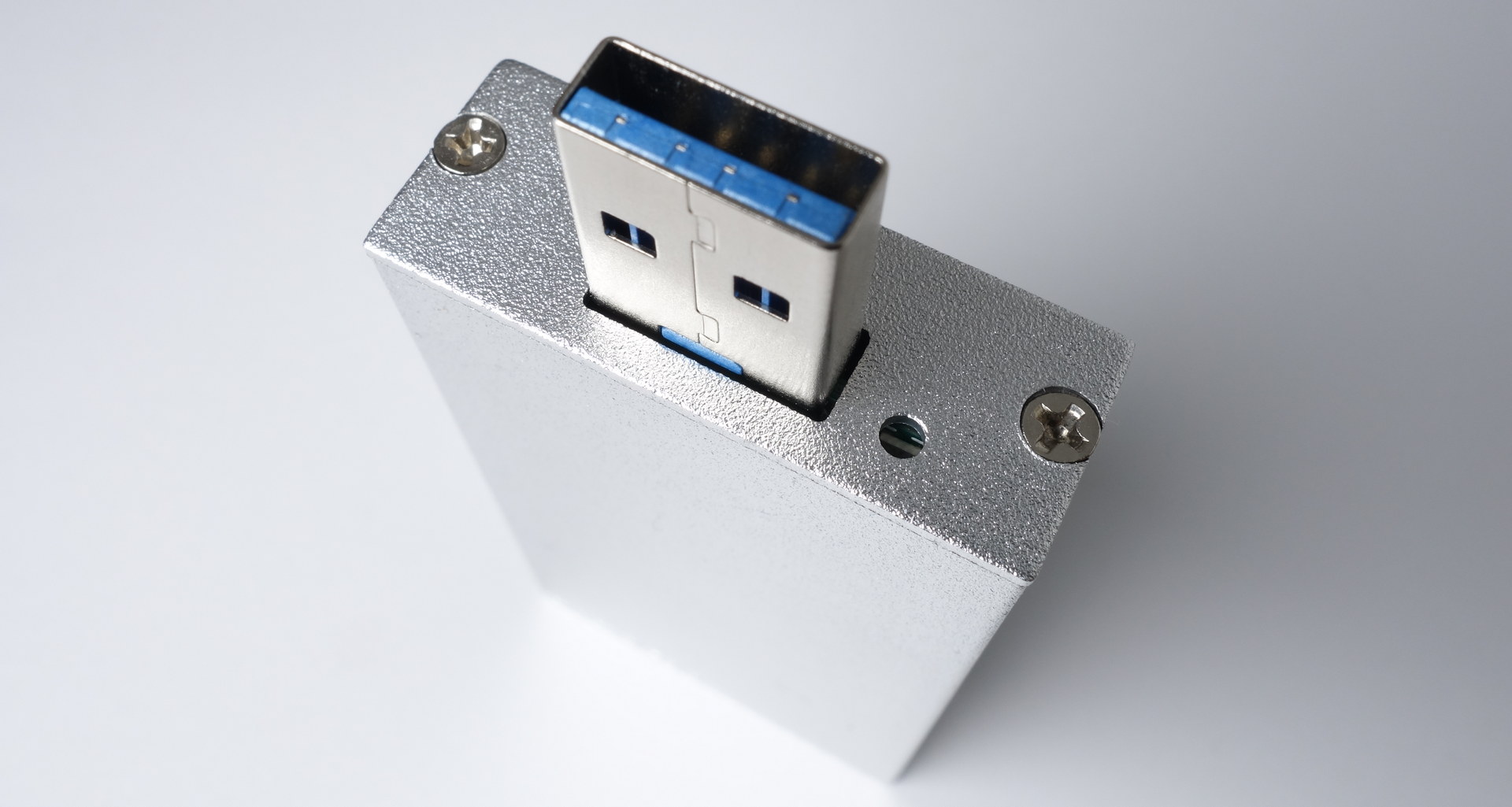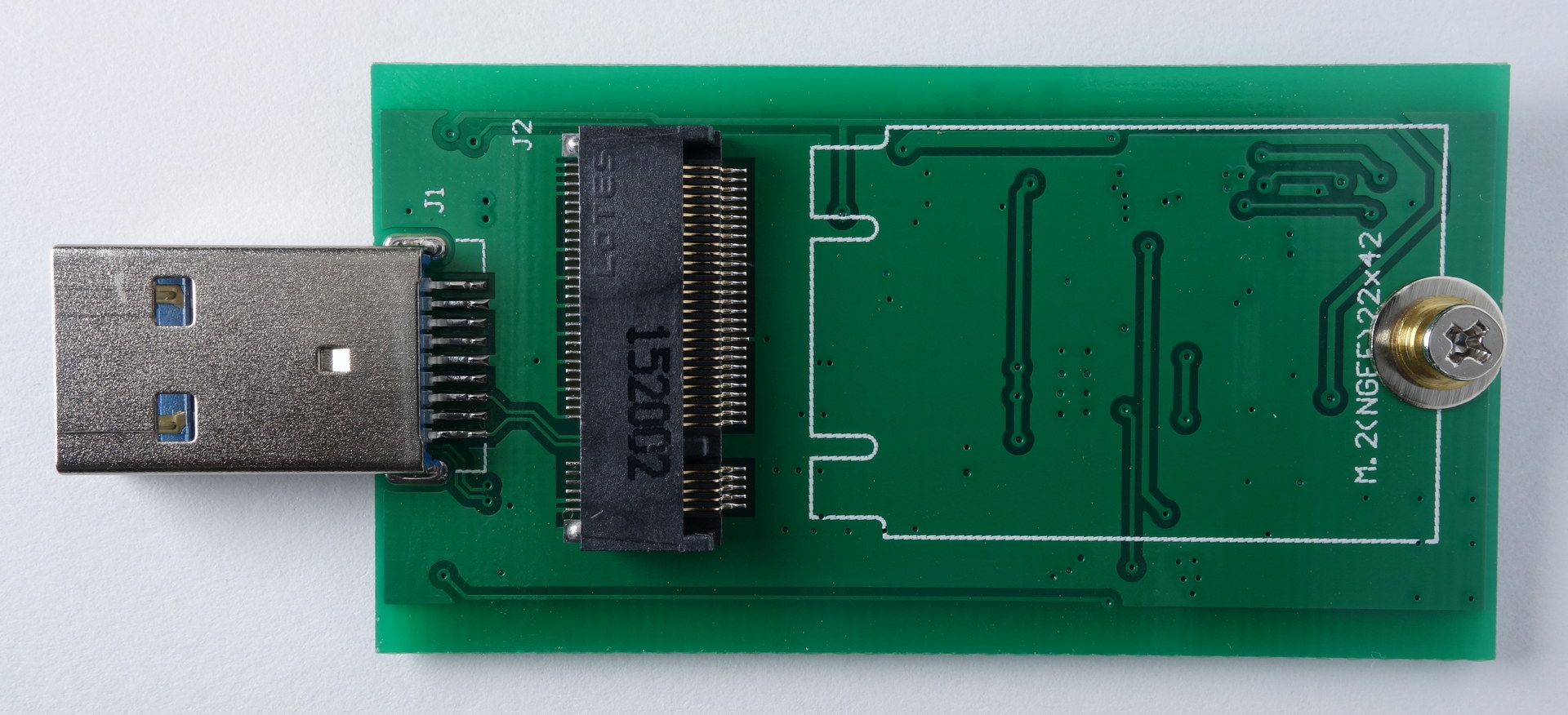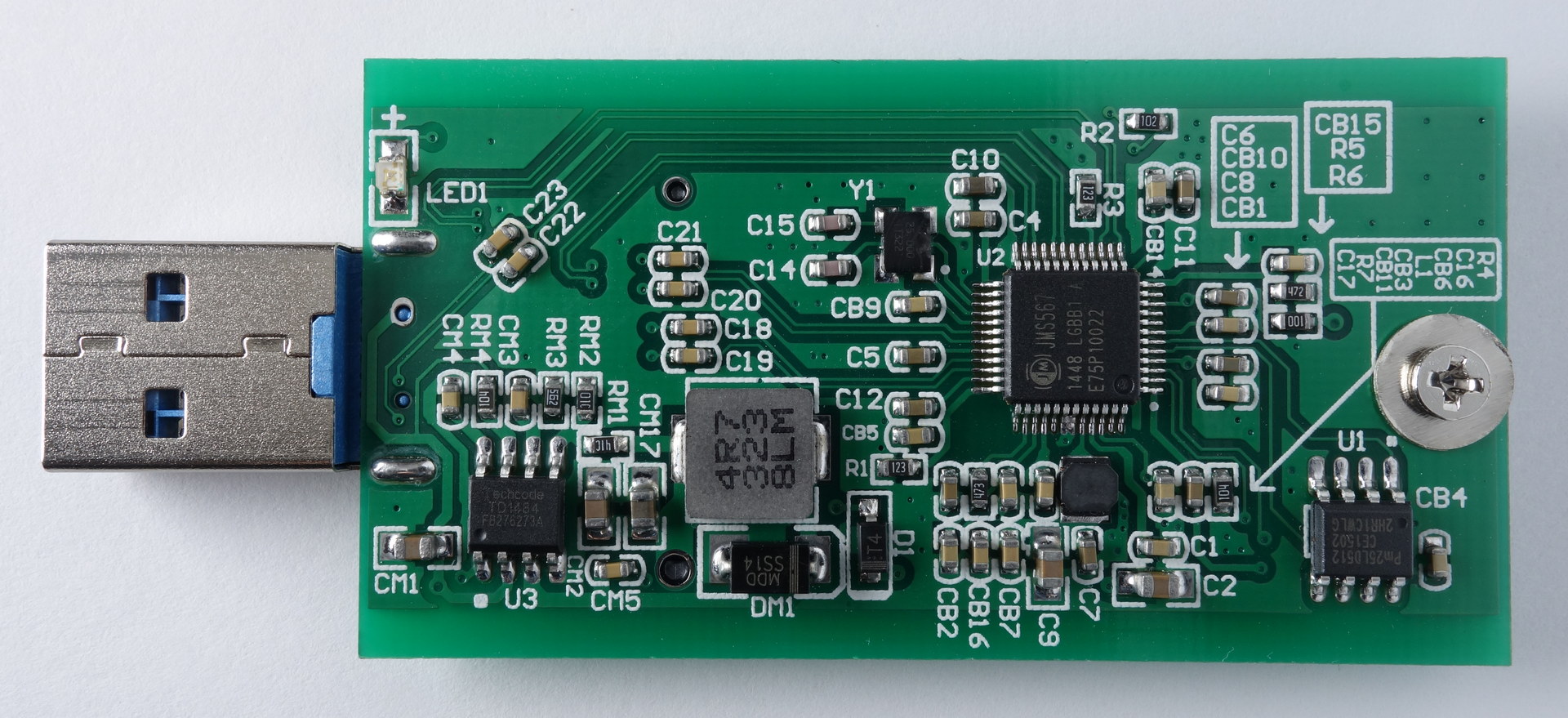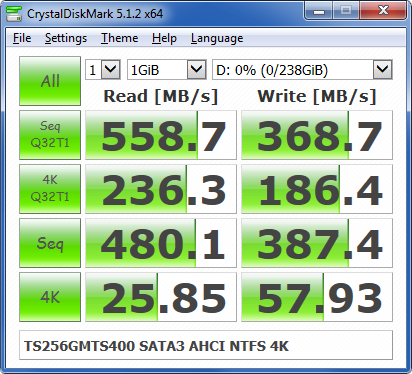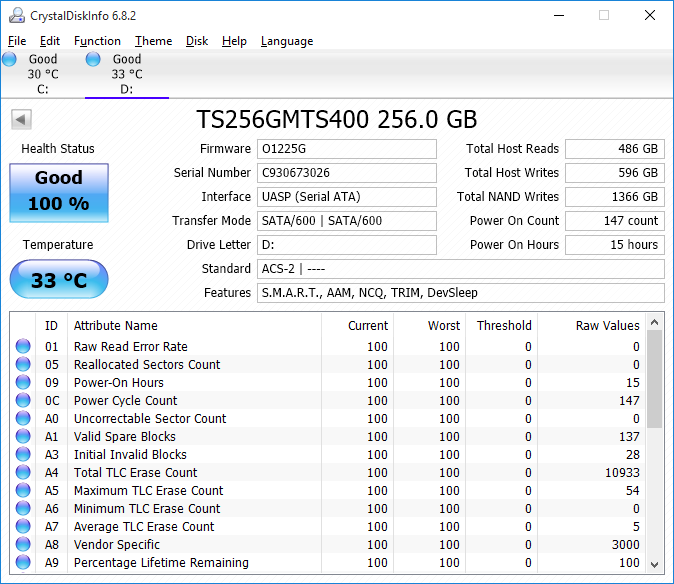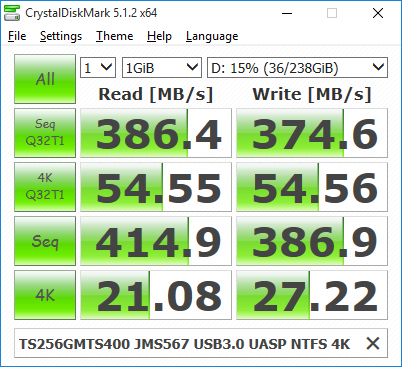The Sintech ST-M2U3-A is the third SATA to USB bridge I'll be reviewing. I got this model mainly for comparing the chipsets available and not for the device itself, as it is pretty chunky and doesn't look very nice. This item is available from Sintech's official website and eBay store.
The Sintech ST-M2U3-U is made out of aluminium and measures 62.5mm x 34.0mm x 12.5mm (long x wide x thick) not including the USB connector. The connector protrudes by 14.5mm. The front side of the enclosure has "SSD USB 3.0 M.2(NGFF) Case" printed on it, but can be scratched off or cleaned off with some acetone.
The aluminium enclosure is approximately 1.3mm thick and feels super solid. Your SSD will be very safe in here.
The front and end pieces are each held in place by two screws, which screw into countersunk holes. The countersinking goes past the edge of the device and the screw is visible from the side.
The cutout for the USB connector is about 0.5mm too large in both axes, allowing the connector to wobble just a bit. To the side of the connector is a hole for the blue activity LED. For some reason the PCB designers always place the LED next to the connector, making it extremely difficult to see from any normal use case.
The top side of the PCB houses the M.2 connector which is B-keyed, meaning PCIe 4-lane SSDs will not fit and PCIe 2-lane SSDs will not work. There is only one hole cut out to support 2242 (42mm long) sized cards, though a 2230 card can be inserted and held in with tape etc.
The bottom side of the PCB contains all the circuitry. The Sintech ST-M2U3-A is powered by the JMicron JMS567 SATA3 to USB3.0 bridge.
There is a 512Kbit SPI flash which is used to store the USB vendor and device ID reported to the host device, as well as any other vendor specific programming. You can download a dump of my flash here.
The 3.3V rail required by the SATA SSD is provided by a TD1484, a monolithic synchronous buck regulator, more than capable of providing the full 4.5W that USB3.0 can provide.
Results
Most of the results here are very similar to the original Sintech adaptor I previously reviewed. Please read that review for explanations. I will just gloss over the details here.
This is the raw performance of the Transcend SSD connected to an M.2 slot through a SATA3 interface in AHCI mode. The sequential read speeds are on the verge of saturating SATA3's real world throughput.
When connected via regular USB3.0 (BOT: Bulk-Only Transfer) through the JMS567 in the Sintech ST-M2U3-A, we see pretty much the exact same results as the JMS578 in the ST-M2U3-U.
On an OS with UASP support, in this case Windows 10, we are able to connect in UASP mode.
In UASP mode, we see similar speeds to the JMS578 except for 4K random with a large queue depth. This is about a third of what the JMS578 and ASM1153E got. Real world file copying speeds reached 395MB/s read and 290MB/s write.
The JMS567 chip stayed quite cool in comparison to the JMS678 in the Sintech ST-M2U3-U, maxing out in the low 40s with an ambient temperature of 20 degrees Celsius. The Transcend SSD also stayed much cooler.
TRIM Check concluded that TRIM is working in UASP mode. Windows generally TRIMs deleted files just under 10 seconds after deleting them. TRIM Check failed to detect TRIM working in Windows 7 in BOT mode.
Conclusion
Sintech ST-M2U3-A seems to not have much effort put into its design. It doesn't look very nice and is too chunky to use as a thumb drive. The only thing going for it is that the enclosure is really solid. File copying speeds are similar to other chipsets but IOPS are a bit of a let down in UASP mode. This is not something I'd really recommend as there are much smaller enclosures.



